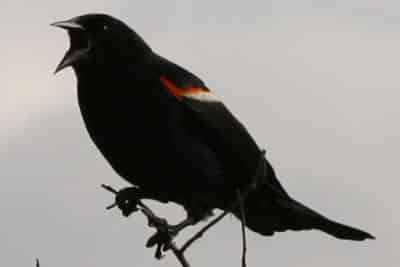
“Thirteen ways of looking at a Blackbird” by Wallace Stevens is a poem about what it means to really know something. In this poem, Stevens shows this connection by writing a first-person poem about a poet’s observation and contemplation when viewing a blackbird.
He does this by making each stanza an explanation of a new way he has perceived this blackbird. First, he writes about his physical perception of the blackbird as an observer. Then, he writes about his mental processes during this time.
These are the thoughts and perceptions of the blackbird itself, as what it must be like to be that bird. By the end, he has concluded that by seeing this blackbird, a connection has been made and he now knows the blackbird has become a part of him.
In the first stanza, he focuses on the eye of the blackbird as an outside observer. This symbolizes the thoughts and the consciousness of the blackbird. It is also a transition from the observer’s perception to the blackbird’s perception. In the second stanza, Stevens goes on to say that he was of “three minds, Like a tree, In which there are three blackbirds.”
This was the first time he makes the connection between seeing the blackbird and him himself metaphorically being the blackbird. He makes this connection even more clear in the fourth stanza when he says that “A man and a woman Are one. A man and a woman and a blackbird are one.” In the sixth stanza, he goes back to being the poet observer as he watches the blackbird fly by his icy window.
Again in the next stanza, he goes back to the point of view of the blackbird wondering why the men of Haddam only imagine golden birds instead of realizing the value of the common blackbird.
At this time, he makes the connection that in seeing and knowing the blackbird it becomes a part of himself. When he says in the eighth stanza “I know noble accents And lucid, inescapable rhythms; But I know, too, That the blackbird is involved in what I know.”
He is acknowledging that he is still a poet but when he sees, thinks, and writes about the blackbird, in a way he is also the blackbird. After this, the blackbird and the poet observer are separated but in the twelfth stanza, Stevens writes “The river is moving. The blackbird must be flying.”
This is meant to show that though the observer’s connection with the blackbird is made by seeing it after the blackbird is gone he still knows it. It is still a part of him.
This poem addresses two things. First, it addresses the epistemological meaning of knowing something. Philosophically, it could be said that by seeing or thinking about another being through its own eyes one could make the connection of knowing it.
By knowing it, I mean knowing its perception of reality. This leads into the second matter that Stevens addresses in “Thirteen Ways of Looking at a Blackbird.” Stevens says that he knows himself as a poet and that is a part of himself as a person.
However, since he also knows the blackbird, that perception makes the blackbird a part of him as well. This connection is what goes into the conclusion “a man and a woman and a blackbird are one.”

My classes uses this to have students make their own poem. We are to use the same general idea as looking at any given object and their point of view. In my opinion, it’s a waste of time. It seems to be difficult to look at an object and think of its point of view. Our assignment was only given 2 days. I would need more to be interactive on this self questioning and project.
Why can’t a school use it? :/
how dare a school use this as a graded piece of work. if you are trying to use this as a process of self questioning. how can you grade that?